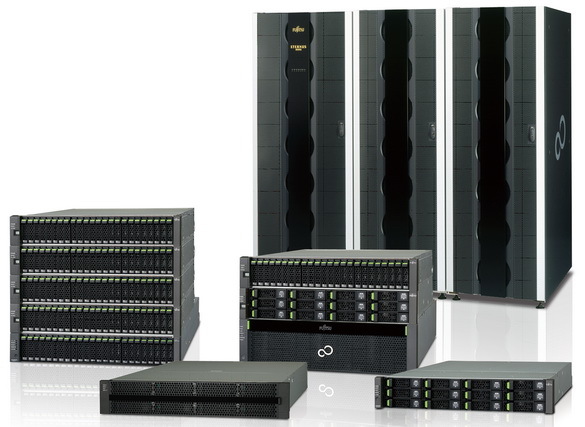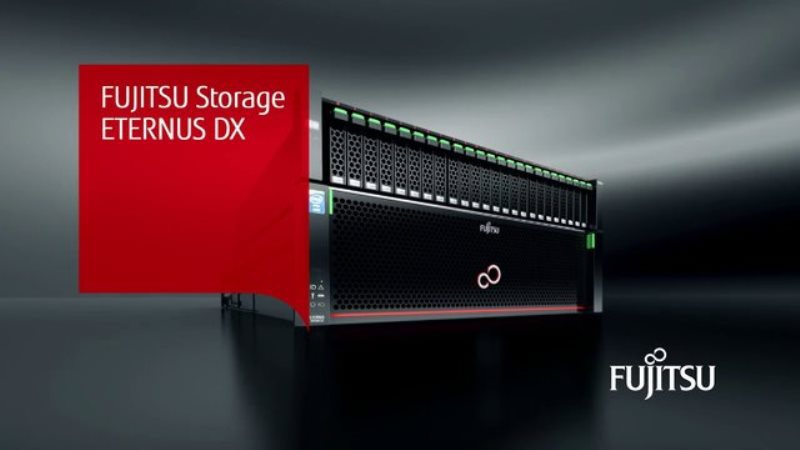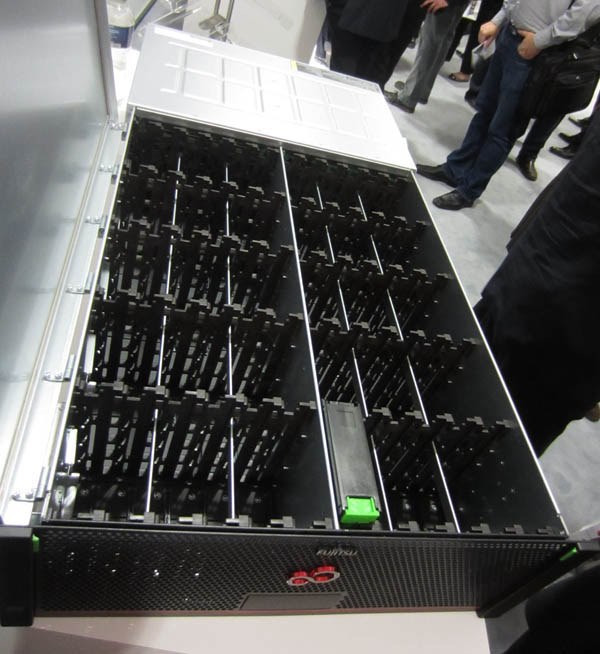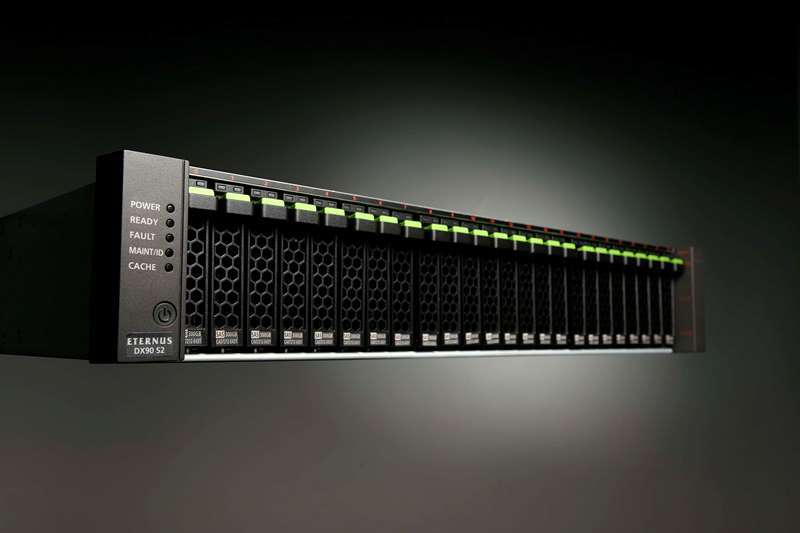Overview of new Fujitsu ETERNUS DX storage systems

Fujitsu's new ETERNUS DX S3 systems are a combination of architecture and automated QoS. The solutions make it possible to ensure that the level of information storage meets modern business needs, increasing the utilization of system resources to 90%, as well as increasing the possibilities of their consolidation and accelerating the return on investment.
New family
The third generation of ETERNUS DX systems includes four devices: scalable entry-level models ETERNUS DX100 S3 and DX200 S3, as well as middle-class models ETERNUS DX500 S3 and DX600 S3. All devices of the model range are unified systems with a single ETERNUS SF control software package. This allows you to implement the concept of a single family, thereby reducing operating costs and the cost of system migration.
This approach makes it possible to guarantee high investment security. So, when when using an initial level of scalability and performance when using a system as a consolidated storage system, it becomes insufficient, you can implement a higher-level array on the same drives without data migration, simply replacing the controller.
It is also worth noting that the developers made every effort to make the new systems a fully unified repository. Access to data in devices is provided both via block protocol via Fiber-Channel, FCoE, iSCSI, SAS and Infiniband, as well as through NFS. There is no need to install additional gateways, as some manufacturers do. If various replication systems are later implemented or reliability is increased, existing licenses for block access will also work for the file mechanism. In addition, ETERNUS DX have the ability to connect to SAN and NAS.

What's new?
An important aspect in the new line of Fujitsu ETERNUS DX storage systems is the use of SAS3 interface for connecting disk shelves. SAS3 is twice as productive as its previous version, which ultimately significantly increases the overall system performance, repeatedly increasing the speed of access to disks.
It is also worth noting the use in new models of higher-density disk shelves that hold up to 60 hard drives. Such shelves and the transition to a faster connection interface made it possible to remove restrictions on the number of connected SSD disks. At the same time, 2.5 and 3.5 inch disk shelves were left. All this makes it possible to connect SAS, NL-SAS and SSD disks in any order.
A number of major improvements have been implemented in the cache area of the new storage systems. So, as an additional cache, an additional solid-state drive with a capacity of more than 5.5 TB is used. When working with large amounts of data, this approach allows you to "close" about 80% of the information due to only cache memory. In fact, such a cache size allows you to completely put in it, for example, a database.

A little bit about OS
Another highlight of the Fujitsu ETERNUS DX S3 family of storage systems is the use of the VxWorks OS, which works inside disk arrays. It is a hard real-time operating system used in devices with high performance and security requirements. This is a modern multi-threaded 64-bit architecture, which, together with the new Intel multi-core server processors, allows for high system performance.
VxWorks operating system has several key advantages:
• Resource intensity;
• Support for multiprocessing and multi-core processors;
• Extended support for TCP / IP networks (IPv4, IPv6);
• Integration with SCADA-applications based on Windows and industrial networks;
• Support for web services (XML, SOAP, WSDL);
• Power management features;
• Database support.

Optimization
The use of new Intel processors optimized for multiprocessor and multithreaded processing in new Fujitsu ETERNUS DX storage systems, controllers with a large cache and an additional cache based on flash drives, as well as SAS3 interface for connecting hard drives and Fiber Channel network connections with speed 16 Gb / s allowed for a five-fold increase in device performance compared to the previous series. It is worth noting the possibility of intelligent data management by priority - systems can themselves determine the sequence of backups.
In addition to a 5-fold increase in the number of I / O operations performed, there is also a threefold increase in bandwidth and a doubled bus bandwidth. Virtualization density has also increased fivefold. In particular, now the task of creating snapshots can simply be transferred to the disk system.
Contact info
For questions, contact: fujitsu@muk.ua.
Fujitsu Authorized Training Courses
MUK-Service - all types of IT repair: warranty, non-warranty repair, sale of spare parts, contract service
